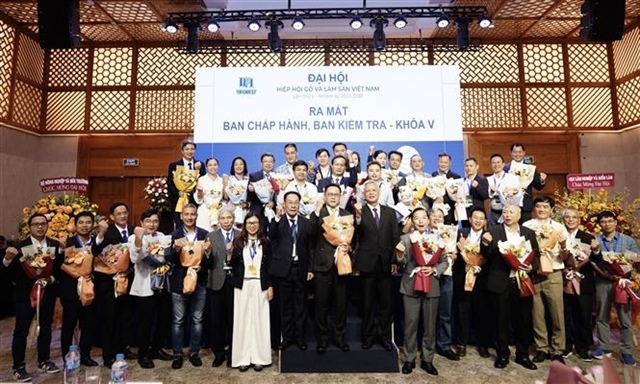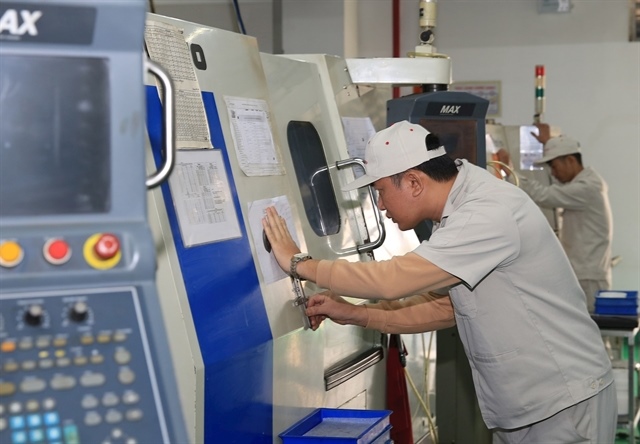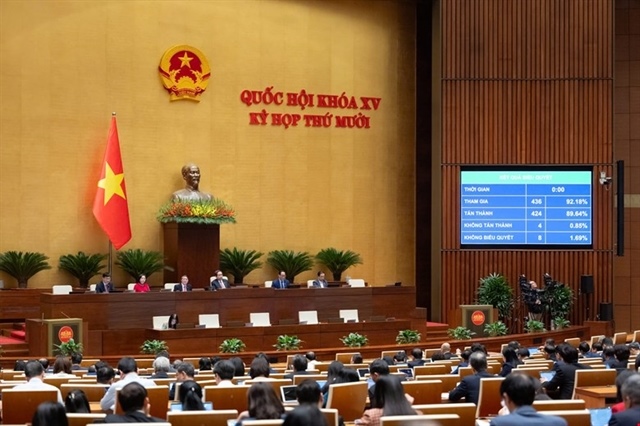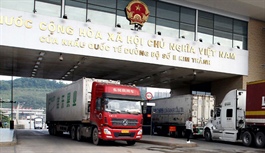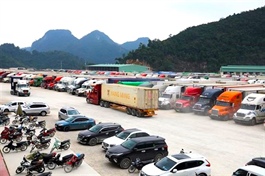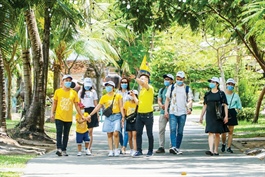Fruit exporters seek irradiation variety
Fruit exporters seek irradiation variety
Many orders, coupled with a strong increase in the demand for fresh fruits from the United States, could be a gold mine for Vietnamese exporters if problems related to the only suitable preservation company were dealt with.

Vietnamese fruit and vegetable exporters are entangled in competition around a food irradiation monopoly, a problem that has lasted for many years. Nguyen Ngoc Hai, director of the Department of Agriculture and Rural Development of the south-central province of Binh Thuan, said that many orders of dragon fruit for the US have come in, but businesses in Binh Thuan could not export.
“The representative of Son Son JSC in Ho Chi Minh City said that the company’s machines were broken, and the fruits could not be irradiated,” Hai said.
Binh Thuan grows 33,750 hectares of dragon fruit, with an output of about 700,000 tonnes per year. The province is trying to promote exports to the US as the previous connection to the Chinese market have been facing difficulties.
As Son Son stopped irradiating agricultural products for export to the US, many exporters fell into a difficult situation, especially those dealing with dragon fruit. The process of exposing food and packaging to ionising radiation is deemed an effective form of preservation that extends the shelf life and therefore reduces the spoilage of food.
Dang Phuc Nguyen, general secretary of the Vietnam Fruit and Vegetables Association (Vinafruit) confirmed that deliveries have been interrupted since the beginning of December.
According to Nguyen, the monopoly has increased the price of fruit irradiation to a level higher than that of Thailand. “The waiting time is also too long, which also affects the quality of exported fruits,” he said. For many years, Vinafruit has petitioned the government to call for investment in more irradiation plants to clear export bottlenecks, but so far, irradiation depends on only one company, Son Son.
According to the regulations of the US’ Animal and Plant Health Inspection Service, any fruit imported into this country must undergo irradiation treatment to ensure that pests do not enter. Nguyen said that if Vietnam had more facilities, fruit exporters would have more choices and the prices would be adjusted by more competition.
In 2008, the US agreed to grant licenses to import Vietnamese dragon fruit. However, transport by sea takes time, reducing the fruit quality, while transport by air is expensive. These issues were overcome by irradiation technology. Thus, Vietnamese dragon fruit found its way to the US, at least in modest quantities. In 2012, Vietnam only exported 1,200 tonnes to the US.
Up to now, Vietnam has officially been licensed to export six types of fresh fruit to the US, namely mango, longan, lychee, dragon fruit, rambutan, and star apples. But in the US, Vietnamese fruits must compete with the same products increasingly grown in states like Florida and California, as well as in neighbouring countries like Mexico which have similar natural conditions to Vietnam. In addition, Vietnam is one of many Asian countries with similar products and substitutes.
In 2021, the value of fruit imports into the US could reach up to $15.1 billion, according to estimates by the US Department of Agriculture, including contributions from Vietnam. The US is the second-largest market of Vietnam’s fruit and vegetable industry, only after China.
However, Vietnam’s export share only reached a value of $260 million in the first 11 months of 2021, down 0.4 per cent on-year, according to the General Department of Vietnam Customs (GDVC).
Vietnam’s fruit and vegetable exports are on a downward trend. Data from the GDVC showed that exports in 2020 stood at nearly $3.27 billion, down 12.7 per cent compared to 2019.
In the short term, to ensure output for domestic fruit while Son Son remained shut, exporters have been forced to look to other markets, including China.
However, the Chinese side only allows clearance of fruit at some border gates, and Lao Cai border gate only re-clears fresh bananas. Several new regulations on the import of agricultural products from China, applied from January 1, may also affect the production and consumption of fruit in Vietnam.
Up to now, the US remains a strong market for Vietnamese fruit, with some demand for the Christmas season. According to the Agro Processing and Market Development Authority under the Ministry of Agriculture and Rural Development, authorised agencies are also negotiating with the US side to license more fresh fruits in the immediate future. This would contribute to the growth momentum of vegetable and fruit exports after a gloomy period.
The situation could also be improved again, if in September 2022, Toan Phat Irradiation Co., Ltd. sets up processes for fresh fruit export to the US. Vuong Dinh Khoat, chairman of Toan Phat, said the company has been licensed by the US side to irradiate fresh fruit. In 2018, Toan Phat invested $10 million into building an irradiation facility in the Mekong Delta province of Long An, with a scale of 10,000 tonnes per year.
To increase fruit exports to the US, the Vietnam Trade Office in the US recommends that domestic enterprises invest in irradiation and cold storage in distribution centres for Vietnamese goods at large import ports on the West Coast, followed by others in the east or the south. This could help reduce costs and create an initiative for businesses to bring goods to the market.


